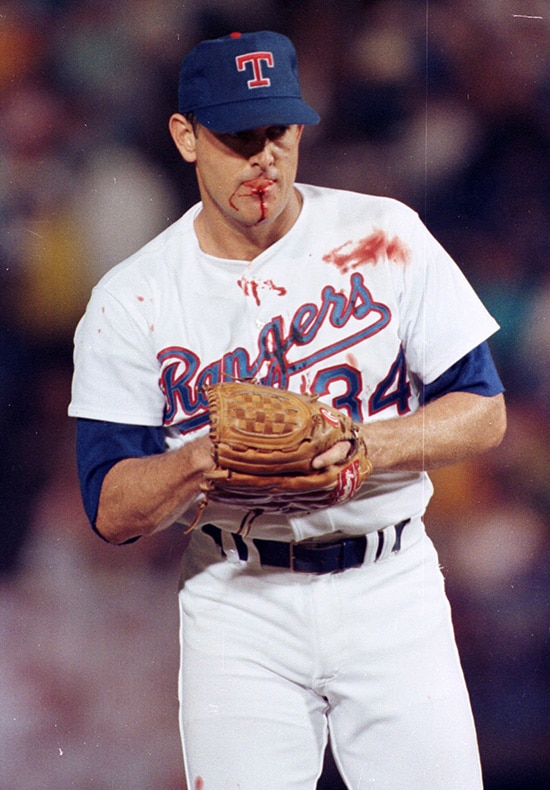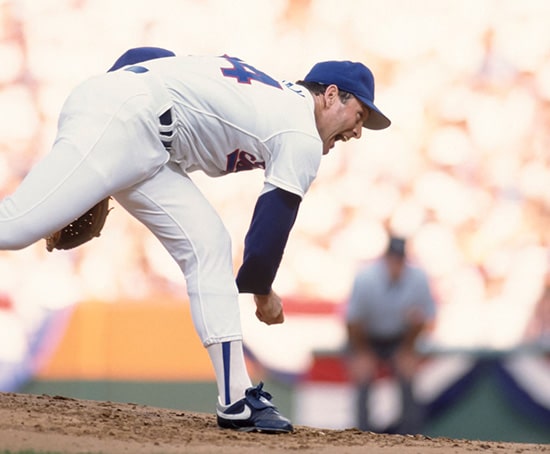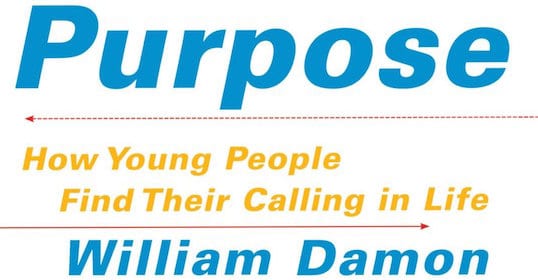
I turned 40 last December.
No, I haven’t had a midlife crisis.
But that number did cause me to self-reflect.
How did the first 20 years of adulthood go?
What can I do to make the next 20 years great?
Around that same time, I happened to watch a documentary about one of my childhood heroes: baseball pitcher Nolan Ryan.
That movie showed up in my life at the right time.
What caught my attention in the documentary was that Nolan Ryan made his 40s the most productive and successful part of his career.
Despite his age, or maybe because of it, from when he was 39 until he retired at 46, Ryan did his best pitching.
Between the ages of 19 and 28, he averaged 9.6 strikeouts per nine innings.
Between the ages of 29 and 38, he averaged 9.2 strikeouts per nine innings.
Between the ages of 39 and 46, he averaged 10.1 strikeouts per nine innings.
He even notched two of his seven record-setting no-hitters while in his 40s.
Not only did Ryan’s professional success impress me, but his personal success in midlife was admirable as well. His marriage to his high school sweetheart, Ruth, continued (and continues today) to thrive, and he raised three good, down-to-earth kids.
When you watch clips of Nolan Ryan on the mound in his 40s, he’s got a presence that commands respect. He looks like a man who knows the talent he’s got and will continue to express that talent for as long as he can. He’s got the grit.
I started calling that quiet, determined confidence that Ryan exuded in midlife “Nolan Ryan Energy.”
It’s the kind of energy I want to foster in my life during the next ten years.
So I dug into some biographies on this legendary pitcher to find ways to nurture my own Nolan Ryan Energy. Here’s what I uncovered. It’s helped me as I’ve started navigating my 40s. If you’re into or approaching midlife, maybe it will help you, too.
Train Hard and Smart
A key to Nolan Ryan’s middle-aged success was his rigorous and innovative training regimen developed with his trainers Gene Colman and Tom House.
Instead of taking it easy in his 40s, Ryan spent five hours a day, six days a week on physical training. Before Nolan Ryan, doing marathon workouts like this was unheard of in baseball. Players might hit a few weight machines, perhaps do a little stretching, and call it a day. But Ryan understood that if he wanted to continue to thrive as a pitcher in his 40s, he needed to continue to develop his strength and endurance, and the way you develop those qualities is through hard training.
Weightlifting played a big role in Ryan’s exercise routine. He loved squatting because it helped him develop his lower body power which was the key to his trademark windup and delivery.
After weights, he would run foul pole to foul pole for laps and then end his conditioning workout with five 60-yard sprints.
Ryan stuck to this workout schedule religiously. When the Rangers traveled to other cities to play, he made sure there was a gym he could use to get his workouts in.
Even though Ryan went hard with his training, he also understood that the body of a 40-something differs from the body of a 20-something. The stress and strain of heavy exercise could wear down his joints and connective tissues. Moreover, muscles don’t recover as quickly as they get older.
So besides training hard, Ryan trained smart in his 40s. Working with Tom House, he devised innovative training protocols for his aging body. He dedicated considerable time to water-based exercises to minimize joint stress. He spent a lot of time stretching. He loved riding a stationary bike after a game while he talked to the press because it allowed him to get his cardio in without stressing his tendons and ligaments.
Takeaway: For many men, their 40s are a season when they let their foot off the gas. Physical activity slides to the back burner as other things take priority in their lives. Even if you’re not a professional athlete, physical health is the foundation for remaining dynamic and effective into middle age. Find a workout regimen that suits your stage in life and do it with vigor and consistency.
Be Open to New Ideas
By the time many men hit their 40s, they’ve developed a well-worn rut in how they approach life. It makes sense. They’ve likely discovered strategies and tactics that have worked for them, so why change things up?
But sometimes staying the course with what worked for you in the first twenty years of manhood will only lead to stagnation in midlife.
Nolan Ryan understood this tendency and its potential trap, so he countered it by remaining open to new ideas. He was, as his wife Ruth put it, “a sponge wanting more information.” He would seek mentors and coaches who could help him continue to succeed and thrive into midlife.
Ryan’s relationship with Tom House, his pitching coach, illustrates this openness. House’s innovative approaches to training included utilizing new technologies, like the Motion Analysis System. Despite his initial skepticism, Ryan gave House the benefit of the doubt and let himself get analyzed by the computer. This led to a revelation about a subtle flaw in Ryan’s pitching mechanics — a tilt of the head — that was impacting his overall performance.
When faced with the physical demands of pitching nine-inning games and the toll they took on his body as he aged, Ryan displayed adaptability again. He developed new training protocols with House, incorporating unorthodox methods like throwing footballs for warm-ups. Many pitchers thought Ryan was a weirdo for throwing footballs before a game, but once they tried it, they discovered what Ryan knew: it allowed a pitcher to loosen up without putting too much stress on his arm.
Takeaway: Instead of getting stuck in your ways in your 40s, be open to new ideas. Read new books. Keep making new friends. Find mentors. Maybe hire a coach to help you improve your career or physical fitness. To thrive in midlife, keep what continues to work for you, but do some exploring too.
Maintain Your Killer Instinct

It’s a typical life trajectory for men: graduate college, get married, get a 9 to 5 job, have some kids, and settle down in the suburbs. Somewhere along the way, guys get a little soft and stagnant. They let themselves go, becoming less active and more sedentary. They have more material possessions but fewer hobbies and interests. They become mildly affable but supremely bland. They lose their edge.
Nolan Ryan offers a lesson on maintaining your edge and “killer instinct” even as you progress through your 40s.
Throughout his career, Ryan was known for not taking crap from batters. If a batter crowded the plate, he had no qualms about throwing a “bow-tie” pitch — a fastball that went right beneath the batter’s chin. He wanted batters to understand that he was in charge.
This competitive instinct and willingness to nearly hit or even hit batters in the name of gamesmanship resulted in one of Nolan Ryan’s most infamous career moments: The Robin Ventura Fight.
The Chicago White Sox and the Texas Rangers had a fierce rivalry in the early 90s. That rivalry exploded into violence after Ryan beaned Chicago White Sox third baseman Robin Ventura. Ventura charged the mound, and Ryan met him halfway, putting Ventura in a headlock like he was wrestling steers on his ranch. While Ryan was only able to get in a few punches and noogies on the young Ventura, the moment sealed Ryan’s reputation as someone who was a fierce competitor, even as he neared the end of his career.
Ryan was known not only for his competitiveness, but for his physical toughness as well. He would push through fatigue, discomfort, and injuries. One moment in his career that epitomizes his grit came after a ground ball from Bo Jackson hit him in the mouth. The ball opened a gash in his lip that covered his white Rangers jersey in blood. Ryan went to the clubhouse to get stitched up and was back to pitching in the next inning. Having started the game, he intended to finish it.
Takeaway: Just because you’re in your 40s, doesn’t mean you have to become a nice, soft suburban dad. You can maintain your edge and killer instinct well into midlife. This doesn’t mean you have to be some a-hole blowhard. It means still having “games” you want to win — physical, professional, social, and otherwise — and going after these goals with gritty determination.
Don’t Let Your Career Define You
Nolan Ryan was dedicated to his craft. He knew he had a talent for pitching, so he did all he could to magnify that talent.
Despite dedicating his life to baseball, Ryan’s identity or sense of worth as a man wasn’t tied up solely with his career as a pitcher. He didn’t pay much attention to the press about him or spend much time thinking about breaking records.
When he was with other people, he didn’t talk about baseball. Instead, he asked people about their lives, or he’d share things that his kids did that made him proud.
What’s more, Ryan made sure to develop passions outside of his sport so that when baseball wasn’t going well, he at least had something else going on in his life that he enjoyed. His biggest passion was ranching. Despite the hard work involved, he relished the challenges and satisfaction of this different kind of work. Ranching allowed him to be himself and recharge his batteries. It would also give him a second career after he hung up his baseball cleats for good.
Takeaway: It’s easy to let your career define you. But having your sole source of identity come from work makes for a brittle sense of self. Take pride in your work, but like Ryan, continue developing hobbies and passions throughout midlife. You need to have multiple buckets of status, so when one is a little emptier for a time, your life still feels full.
Keep Family a Priority
While Nolan Ryan was fiercely dedicated to his career as a pitcher, he never sacrificed success as a husband or father to gain professional success.
When Ryan was negotiating his contract with the Rangers, he wanted to make sure that his family would have access to the team’s clubhouse so that he could spend time with his wife and children. He got that request granted and took advantage of his kids’ access to his “office” by bringing them to work as much as possible.
Ryan’s daily workouts were where he got in much of his family time. He often did his workouts in the early morning, when he had the clubhouse pretty much to himself. He’d bring his kids along so he could talk and play with them between doing sets of exercises.
Takeaway: In midlife, you’re frequently in an all-systems-go phase of your career, but it’s crucial to prioritize your family and maintain a healthy work-life balance. If you’re strapped for time at home, see if there are ways you can incorporate your family into other areas of your life, whether that’s bringing your kids to work at times when they won’t get in the way, meeting up with your family for dinner at the office/hospital cafeteria when you’re working the late shift, or having your children exercise with you during your daily workout.
Start Passing the Torch
The German psychologist Erich Fromm believed that one of the tasks adults need to start taking up as they progress through middle age is becoming “generative.” Generativity means shifting your focus from self-development to the development of others. For men in midlife, this means investing in their children’s lives and/or becoming a mentor to younger people at work, church, etc. Generativity is all about passing the torch.
As Ryan advanced through middle age, he started to shift towards generativity.
When the Rangers faced off against the Mariners, Ryan noticed that their young pitcher, Randy Johnson, had some issues with his pitching mechanics. Johnson’s problem was that he wasn’t consistent. He could throw hard, but struggled with accuracy. Ryan thought Johnson had a lot of potential as a pitcher and didn’t like seeing him underperform. So before one game where the Rangers and Mariners would be facing off, Ryan and his pitching coach Tom House spent time with Johnson, giving him advice and insights on how he could improve his mechanics.
After Ryan’s mentoring, Johnson would become one of the most dominant pitchers in Major League history and join Ryan in the Hall of Fame.
Said Johnson of the intervention:
[It’s] something I will never forget. I was surprised someone playing in a different organization would actually take me aside and try and help me. It’s not very often the opposing pitcher and pitching coach will take a player from another team and actually mentor them.
It was the big turning point of my career. From that point on, I became more of a consistent pitcher.
Takeaway: As you go through middle age, start looking for ways to become generative — to think not only about how you can improve your own life, but how you can improve the lives of others. You’ll find it meaningful and satisfying to help others through the stages of life you’ve already navigated.
Steee-rike!

When I turned 40, I brought down my old baseball card collection from the attic. I have a section dedicated just to my Nolan Ryan cards.
I pulled out the card of 43-year-old, freshly beaned-with-a-ball Nolan Ryan with blood dripping from his lip and put it on the wall in my office.
It’s my daily reminder to embrace some Nolan Ryan energy and put a little heat on the pitch of midlife.
Looking for more inspiration and guidance on successfully navigating midlife? Check out these articles and podcasts:
- Podcast #776: How to Shift Out of the Midlife Malaise
- The Seasons of a Man’s Life: The Midlife Transition
- Podcast #704: How to Keep Your Edge as You Get Older
- Are You Suffering From Soft Suburban Dad Syndrome? 50 Questions for Self-Examination
Source: Nolan Ryan: The Making of a Pitcher by Rob Goldman







